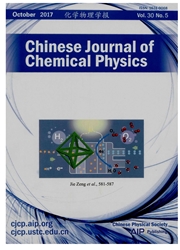

 中文摘要:
中文摘要:
通过程序升温脱附谱的方法探究了266nm激光照射下异丙醇在锐钛矿TiO2(101)表面的光化学,并提出了详细的解离机理.在光照作用下,异丙醇发生分步解离:首先,O-H键断裂生成异丙氧基;然后,仲碳的C-H键在光照的作用下进一步发生解离,从而生成丙酮,两步生成的氢原子均转移到相邻的桥氧上.在升温过程中,这部分氢原子会与分子态的异丙醇发生置换反应,从而以低温水和高温异丙基的形式从表面脱附出来.
 英文摘要:
英文摘要:
Photocatalysis of 2-propanol on A-TiO2(101) has been investigated using a temperature programed desorption method with 266 nm laser light. A clear mechanism is proposed for photodissociation of 2-propanol on A-TiO2(101). Acetone product on five coordinate Ti4+ sites is formed in a stepwise manner in which the O-H dissociation proceeds first and then followed by secondary C-H dissociation of 2-propanol while H atoms are transferred to the adjacent bridge bond oxygen (BBO) sites. Low temperature water is formed in a thermally driven process via H-atom on BBO in exchange with isopropyl groups of molecule 2-propanol, while isopropyl radical desorbs at high temperature during the TPD process. The observation demonstrates the prospect of TiO2 as a photocatalyst for degradation of organics.
 同期刊论文项目
同期刊论文项目
 同项目期刊论文
同项目期刊论文
 期刊信息
期刊信息
